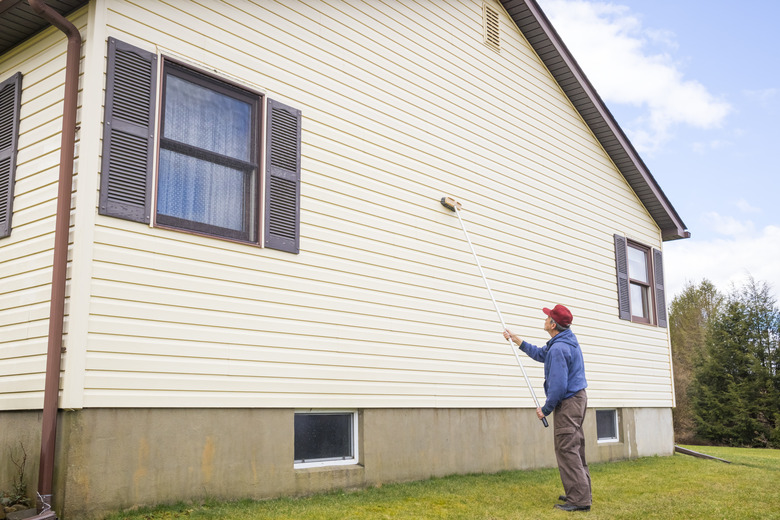How To Use Bleach To Clean Vinyl Siding
We may receive a commission on purchases made from links.
Under that dirt and accumulated grime outside sits some nice vinyl siding that's crying out to be refreshed. Cleaning vinyl siding isn't hard or expensive; it just takes work. Over the years, precipitation and wind-blown dirt, pollen, and mold spores all cause vinyl siding to look tired, green, and grungy. The dirt may vanish, but mold and mildew are a persistent problem that you can mitigate by cleaning vinyl siding with bleach.
What Bleach Is Best?
What Bleach Is Best?
Regular household bleach works well. There are also "outdoor bleach" options, which often have added surfactants that are helpful for cleaning outdoor furniture or siding, and they also have fewer disinfectants, making them less harsh for the landscape. It's for that reason that Clorox recommends letting its Pro Outside formula sit for three times longer than its household version before rinsing.
Bleach is damaging for landscaping and plants, so outdoor bleaches are more forgiving, especially if using it widely on your property. For a greener option, ditch chlorine bleach for oxygen bleach. With no nitrogen or phosphates, oxygen bleach is essentially made from soda ash and hydrogen peroxide with only soda ash as a byproduct, so it's safer for both you and the planet.
Take Proper Precautions Before Starting
Take Proper Precautions Before Starting
Chlorine bleach can and will damage clothing, furniture, upholstery, unsealed wood, and more, so it's important to be careful with bleach whether it has been diluted or not. Protective glasses and rubber gloves are recommended when working with bleach for household maintenance. Respirator masks are great for anyone with sensitive lungs, but working outside makes a mask less necessary.
Wear old clothes you don't mind getting splotchy with errant bleach. Close all windows. Hose down all your nearby greenery with tap water and then cover susceptible bushes and grass with tarps while working over them. Don't forget to move any landscape-covering tarps along with you as you move to a new section. Unsealed wood can be bleached, so cover any that may come in contact with the solution.
This isn't a job for a hot, sunny day because the bleach solution evaporates too quickly. It is best to do this in the morning and early or late in the season when temperatures are lower.
If your exterior is heavily soiled, be sure to use a siding cleaning solution that the vinyl siding manufacturer approves. Chlorine bleach should not be mixed with chemicals of any kind, as this can be highly toxic, and that includes vinegar too. There are powdered laundry detergents and some soaps that are safe for mixing.
Things Needed
How to Clean Your Vinyl Siding With Bleach
1. Prepare the Work Area
Hose down all greenery, as the water will help protect it if any bleach should splash it. Cover all bushes and plants with plastic sheeting. Tape off any unsealed wood.
2. Mix the Solution
If you're working with chlorine bleach, add 1/2 cup per gallon of water; for oxygen bleach, use 3/4 cup. Oxygen bleach can be added to a vinyl siding cleaning solution for added power. Always use a plastic bucket or container for bleach solutions.
3. Clean the Siding
For horizontal siding, use a long-handled soft scrub brush to apply the solution and scour lightly. On vertical pieces, use a sponge or mop. Allow the solution to sit for at least five minutes.
4. Rinse off the Siding
Fit a spray nozzle on your garden hose and thoroughly rinse the siding with water. Allow it to dry and then stand back and bask in the pride of a job well done. Perhaps you'll inspire your neighbors, and if you did a great job, you'll probably keep the flies off your vinyl siding too.
